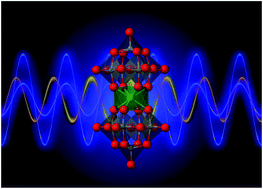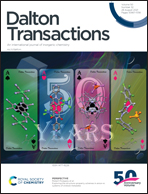Insights on the coupling between vibronically active molecular vibrations and lattice phonons in molecular nanomagnets†
Abstract
Spin–lattice relaxation is a key open problem to understand the spin dynamics of single-molecule magnets and molecular spin qubits. While modelling the coupling between spin states and local vibrations allows to determine the more relevant molecular vibrations for spin relaxation, this is not sufficient to explain how energy is dissipated towards the thermal bath. Herein, we employ a simple and efficient model to examine the coupling of local vibrational modes with long-wavelength longitudinal and transverse phonons in the clock-like spin qubit [Ho(W5O18)2]9−. We find that in crystals of this polyoxometalate the vibrational mode previously found to be vibronically active at low temperature does not couple significantly to lattice phonons. This means that further intramolecular energy transfer via anharmonic vibrations is necessary for spin relaxation in this system. Finally, we discuss implications for the spin–phonon coupling of [Ho(W5O18)2]9− deposited on a MgO (001) substrate, offering a simple methodology that can be extrapolated to estimate the effects on spin relaxation of different surfaces, including 2D materials.



 Please wait while we load your content...
Please wait while we load your content...